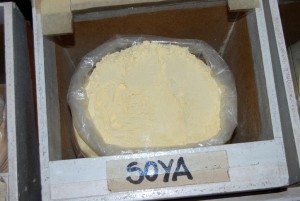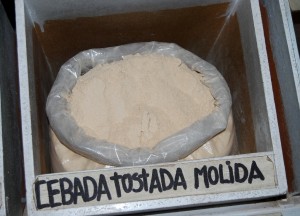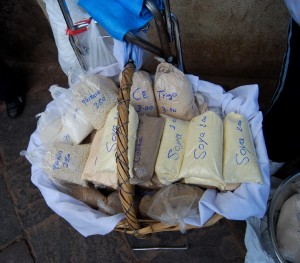The “Seven Flours,” a Popular Breakfast and Medicine.

The “seven flours” may sound like something from Snow White. But it is a Cuzco label for a ground meal containing a variety of grains and seeds, not necessarily seven, a combination of some of the following” quinoa, fava beans, soy beans, kiwicha (amaranth,) cañiwa (chenopodium pallidicaule,) wheat, barley, corn, peas, and sesame. It is much loved for breakfast and is considered a medicine.
The various grains and seeds grow in our Sacred Valley of the Incas. Some of them have along past in the Andes when they were important staples, such as corn, quinoa, cañiwa, and kiwicha. The rest may have come from Europe but have entered deep into our soil and bellies as basic products that help us survive.
In combination, they not only stitch our history together but make a better product. the native grains especially are famous for their high nutritional value. People are aware of this and buy them because together the seven flours are considered a super food, especially for breakfast, and a holy remedy.
Toasted Kiwicha Ready for Breakfast

But it was not always like this. People in rural areas continued to plant their traditional crops, but in the cities people wanted modern foods and so gave up many of the traditional foods, such as these grains, that were more healthful. In the nineties this started to shift when the national government along with Non-Governmental Organizations heavily promoted the indigenous grains. Some twenty years later they are quite popular and have gained an international demand.
The combination of the “seven flours” or more appropriately the “seven Andean flours” are very common in Cuzco, even if not so common elsewhere. Vendors sell each of the grains in whole form and ground form separately at the same time they make combinations and sell them as the “seven flours”.

They are easily acquired, since they are sold in all of the popular markets,even if not in the super markets, They are sold in the section called “menestras” (grains and dried legumes) where they are prepared artisanally and not industrially. The grains are individually toasted and once cool ground. Then they are blended following each vendors recipe to be sold daily.
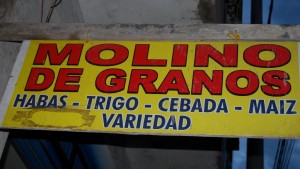
Señora Lucrecia, dressed in a give-away apron, is a vendor who sells in the doorway number five of the San Pedro Market. For some eight years she has been selling this nutritious mixture of flours. She tells that even before she began there already were people who made the “seven flours”. They would take the toasted grains in big cloth bags, called costales, to the mills by the Bridge of Santiago or to the neighborhood of Santa Ana. There they would mix them to be sold in the different markets by small scale vendors. At that time there were not a lot of vendors in the doorways of this product like now. But the demand has grown. People are becoming more aware, she says, that it is delicious and nutritious, especially for young children.
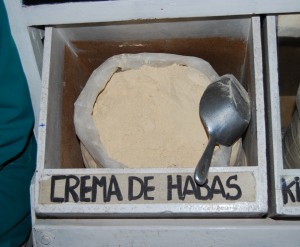
For breakfast people sprinkle it over boiling water until they get the consistency they want, whether a thin gruel or a thick cereal.
It is also called a holy remedy in Cuzco’s tradition of natural medicine. it is used to heal blows, sprains, dislocations, and swellings.
Toasted Barley Ready for Breakfast


